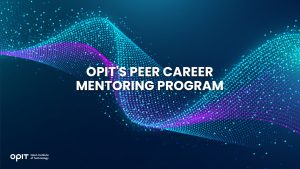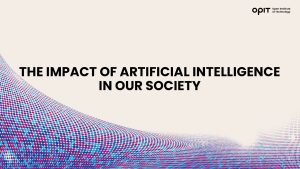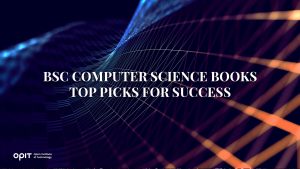
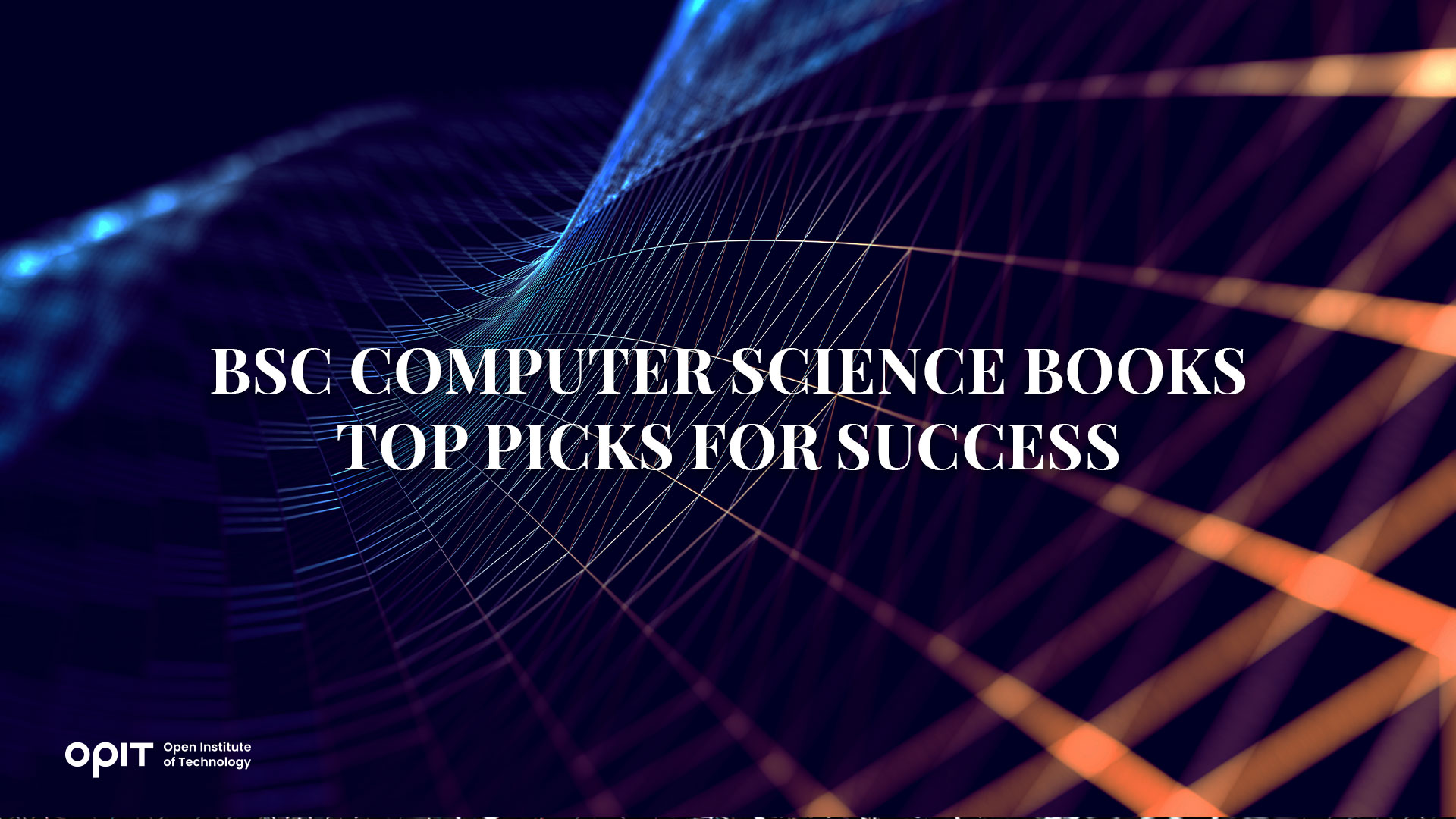
Books represent gateways to new worlds, allowing us to gain valuable knowledge on virtually any topic. Those interested in exploring computer science books face two challenges. First, just like you can’t build a good house without a proper foundation, you can’t expand your knowledge if you don’t understand basic concepts. Secondly, technology is always evolving, so besides understanding how things work, you need to stay current with the latest trends.
Finding books that help you build a good foundation and follow innovations isn’t easy. Fortunately, you don’t have to go through hundreds of titles to find the good ones. Here, we’ll introduce you to the best BSc Computer Science books that will set you up for success.
Top BSc Computer Science Books
These BSc Computer Science books can “program” your mind and help you absorb knowledge.
Introduction to Computer Science
Many people are eager to learn how to program and immerse themselves in the IT world. But the first step toward that is adopting fundamentals. Before jumping into the IT industry, you need to learn more about computer science and the basic concepts behind it.
Computer Science Illuminated by Nell Dale and John Lewis
This student-friendly book sheds light on computer science. It explores operating systems, hardware, software, and networks from “neutral ground” (without focusing on particular programming languages). Therefore, if you don’t “speak” programming languages just yet, this book will be your best friend.
Intro to Python for Computer Science and Data Science: Learning to Program With AI, Big Data, and the Cloud by Paul Deitel and Harvey Deitel
If you want to be a programming expert, you may need to speak Python, a universal language with a wide array of applications. This book teaches you how to use Python in computer science and offers the perfect balance between theoretical and practical knowledge. It transforms complex information into comprehensive and engaging data.
Data Structures and Algorithms
Finding the best BSc Computer Science book on data structures and algorithms can feel like trying to find a needle in a haystack. We found the needle for you and offer the best options.
Data Structures and Algorithms Made Easy by Narasimha Karumanchi
This book is a winner in the data structures and algorithms game. It’s the perfect option for beginners interested in learning the topic from scratch and building a solid foundation for more advanced levels. It covers basic concepts and moves on to more complex stuff without overwhelming the readers.
Data Structures and Algorithms in Java by Robert Lafore
If you’re familiar with Java and want to start with data structures and algorithms, this book is the gold standard. It will guide you on a journey from basic Arrays and Strings to advanced structures like Hash-Tables and Graphs.
Computer Networks
Computer networks are grids through which computing devices “talk to” each other and share data. Here are the books you can use to improve your knowledge and get ahead in your career.
Computer Networks by Andrew S. Tanenbaum
If you want to understand the nitty-gritty behind computer networks, this book is the way to go. Hop on a journey through email, the world wide web, video conferencing, and much more, to understand how the networks work and how to use them to your advantage.
Every chapter follows the same, easy-to-follow structure containing basic principles and real-life examples.
Computer Networking: A Top-Down Approach by James F. Kurose and Keith W. Ross
This beginner-friendly book takes a somewhat unusual approach. It first introduces students to applications and uses them to explain fundamental concepts. That way, students are exposed to the “real world” early on and can understand how networking works with ease.
Operating Systems
An operating system for a computer is like oxygen for a human; it can’t live without it. Operating systems are interfaces that support everything computers do. Here are the best books about them.
Operating Systems: Three Easy Pieces by Remzi Arpaci-Dusseau and Andrea Arpaci-Dusseau
How do operating systems work? What are the three basic concepts hiding behind every OS? Find the answers to these questions and learn everything OS-related in this book. While beginner-friendly, this amazing study can be combined with more advanced materials and offer a deeper understanding of modern OSs.
Guide to Operating Systems by Greg Tomsho
This book represents a detailed guide on installing, updating, maintaining, and configuring operating systems and everything related to them. Besides offering general info, the book explores specific OSs and allows you to peek into this world without feeling overwhelmed.
Database Systems
Database systems are like virtual warehouses where you can keep your data secure. They’re the ones we can “thank” for easy information retrieval, browsing, and organization. If you want to learn the ins and outs of database systems, these books can help.
Database Systems: The Complete Book by Hector Garcia-Molina, Jeffrey D. Ullman, and Jennifer Widom
This book is the holy grail for many computer science students. It offers a comprehensive approach and detailed explanations of everything related to database system design, use, and implementation. The book is extensive, but it’s written in an engaging way, so reading through it is a breeze.
Database Systems: Design, Implementation, & Management by Carlos Colonel and Steven Morris
Building your virtual warehouses for storing data may seem impossible. But it can become your reality thanks to this excellent book. It contains clear and comprehensive instructions on building database systems, offers concrete examples, but also focuses on the bigger picture and latest industry trends.
Software Engineering
Designing and constructing software is no walk in the park. If you’re interested in this industry, you need to build your skills meticulously. Books that can help you on this exciting (and sometimes frustrating) journey are reviewed below.
Clean Code: A Handbook of Agile Software Craftsmanship by Robert C. Martin
In this book, Robert C. Martin, a software engineering legend, discusses the seemingly insignificant differences between bad and poorly-written codes. He explains which “symptoms” bad codes manifest and how to clean them.
Code Complete: A Practical Handbook of Software Construction by Steve McConnell
One of the first (and smartest) steps toward building quality code is getting this book. Here, the author summarized everything there is to know about constructing software. Since the book contains both the basics and the more advanced construction practices, everyone finds it useful, both beginners and pros.
Additional Resources for BSc Computer Science Students
BSc Computer Science books aren’t the only spring you should drink water from if you’re thirsty for knowledge on the subject.
Online Platforms and Courses
Online platforms and courses are great resources for those who want to expand their knowledge and learn how to cash it in. The internet is overflowing with great courses focusing on various aspects of computer science. Here are a few ideas to get you started:
- Open Institute of Technology (OPIT) – The institute offers a comprehensive online BSc in Computer Science. Throughout the program, students get acquainted with everything computer science-related. After completing their studies, they’ll be able to land high-paying jobs.
- Udemy and Coursera – Although not “official” institutes and universities, these platforms deserve a seat at the table. Both Udemy and Coursera offer quality computer science courses held by some of the most respected names in the industry.
Coding Practice Websites
You’ve read books, attended courses, and feel like you know everything there is to know about the theoretical part. But is there a way to put this theory into practice and see whether your codes work? The answer is yes! Practice makes perfect, and coding practice websites will become your best friends and help you conquer programming.
- Coderbyte – Solve real-life coding issues and drive your skills to perfection. With over a dozen available programming languages, you can try out as many ideas as you’d like.
- HackerRank – HackerRank is home to hundreds of coding challenges. Plus, it has leaderboards, so you can see how you compare to other coders. It’s also home to useful tutorials, and since the website is popular, you may even be able to land your dream job.
Computer Science Forums and Communities
Is there a better place for like-minded people to meet and discuss the topics they’re passionate about? Computer science forums and communities should be an important stop on your way to becoming an expert on the subject.
Tips for Success in BSc Computer Science
Success doesn’t happen overnight (at least for most people). If computer science is your true passion, here’s how to master it:
- Focus on the basics to create a good foundation.
- Put your thinking cap on and practice problem-solving and critical thinking skills.
- Participate in group projects and collaborations (teamwork makes the dream work).
- Keep up with the latest industry trends.
- Gain valuable hands-on experience through internships.
Acquire Computer Science Knowledge Effectively
Although books don’t offer practical knowledge, they can be invaluable allies in setting a great theoretical foundation. By carefully choosing the best books and putting effort into developing your skills, you’ll become a pro in a jiff.
Related posts
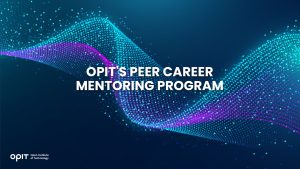
The Open Institute of Technology (OPIT) is the perfect place for those looking to master the core skills and gain the fundamental knowledge they need to enter the exciting and dynamic environment of the tech industry. While OPIT’s various degrees and courses unlock the doors to numerous careers, students may not know exactly which line of work they wish to enter, or how, exactly, to take the next steps.
That’s why, as well as providing exceptional online education in fields like Responsible AI, Computer Science, and Digital Business, OPIT also offers an array of career-related services, like the Peer Career Mentoring Program. Designed to provide the expert advice and support students need, this program helps students and alumni gain inspiration and insight to map out their future careers.
Introducing the OPIT Peer Career Mentoring Program
As the name implies, OPIT’s Peer Career Mentoring Program is about connecting students and alumni with experienced peers to provide insights, guidance, and mentorship and support their next steps on both a personal and professional level.
It provides a highly supportive and empowering space in which current and former learners can receive career-related advice and guidance, harnessing the rich and varied experiences of the OPIT community to accelerate growth and development.
Meet the Mentors
Plenty of experienced, expert mentors have already signed up to play their part in the Peer Career Mentoring Program at OPIT. They include managers, analysts, researchers, and more, all ready and eager to share the benefits of their experience and their unique perspectives on the tech industry, careers in tech, and the educational experience at OPIT.
Examples include:
- Marco Lorenzi: Having graduated from the MSc in Applied Data Science and AI program at OPIT, Marco has since progressed to a role as a Prompt Engineer at RWS Group and is passionate about supporting younger learners as they take their first steps into the workforce or seek career evolution.
- Antonio Amendolagine: Antonio graduated from the OPIT MSc in Applied Data Science and AI and currently works as a Product Marketing and CRM Manager with MER MEC SpA, focusing on international B2B businesses. Like other mentors in the program, he enjoys helping students feel more confident about achieving their future aims.
- Asya Mantovani: Asya took the MSc in Responsible AI program at OPIT before taking the next steps in her career as a Software Engineer with Accenture, one of the largest IT companies in the world, and a trusted partner of the institute. With a firm belief in knowledge-sharing and mutual support, she’s eager to help students progress and succeed.
The Value of the Peer Mentoring Program
The OPIT Peer Career Mentoring Program is an invaluable source of support, inspiration, motivation, and guidance for the many students and graduates of OPIT who feel the need for a helping hand or guiding light to help them find the way or make the right decisions moving forward. It’s a program built around the sharing of wisdom, skills, and insights, designed to empower all who take part.
Every student is different. Some have very clear, fixed, and firm objectives in mind for their futures. Others may have a slightly more vague outline of where they want to go and what they want to do. Others live more in the moment, focusing purely on the here and now, but not thinking too far ahead. All of these different types of people may need guidance and support from time to time, and peer mentoring provides that.
This program is also just one of many ways in which OPIT bridges the gaps between learners around the world, creating a whole community of students and educators, linked together by their shared passions for technology and development. So, even though you may study remotely at OPIT, you never need to feel alone or isolated from your peers.
Additional Career Services Offered by OPIT
The Peer Career Mentoring Program is just one part of the larger array of career services that students enjoy at the Open Institute of Technology.
- Career Coaching and Support: Students can schedule one-to-one sessions with the institute’s experts to receive insightful feedback, flexibly customized to their exact needs and situation. They can request resume audits, hone their interview skills, and develop action plans for the future, all with the help of experienced, expert coaches.
- Resource Hub: Maybe you need help differentiating between various career paths, or seeing where your degree might take you. Or you need a bit of assistance in handling the challenges of the job-hunting process. Either way, the OPIT Resource Hub contains the in-depth guides you need to get ahead and gain practical skills to confidently move forward.
- Career Events: Regularly, OPIT hosts online career event sessions with industry experts and leaders as guest speakers about the topics that most interest today’s tech students and graduates. You can join workshops to sharpen your skills and become a better prospect in the job market, or just listen to the lessons and insights of the pros.
- Internship Opportunities: There are few better ways to begin your professional journey than an internship at a top-tier company. OPIT unlocks the doors to numerous internship roles with trusted institute partners, as well as additional professional and project opportunities where you can get hands-on work experience at a high level.
In addition to the above, OPIT also teams up with an array of leading organizations around the world, including some of the biggest names, including AWS, Accenture, and Hype. Through this network of trust, OPIT facilitates students’ steps into the world of work.
Start Your Study Journey Today
As well as the Peer Career Mentoring Program, OPIT provides numerous other exciting advantages for those who enroll, including progressive assessments, round-the-clock support, affordable rates, and a team of international professors from top universities with real-world experience in technology. In short, it’s the perfect place to push forward and get the knowledge you need to succeed.
So, if you’re eager to become a tech leader of tomorrow, learn more about OPIT today.
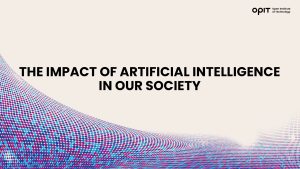
The world has entered the age of artificial intelligence (AI), and this exciting new technology is already changing the face of society in an ever-growing number of ways. It’s influencing a plethora of industries and sectors, from healthcare and education to finance and urban planning. This guide explores AI’s impact on three of the core pillars of life: business, education, and sustainability.
AI in Business: Unlocking Unprecedented Opportunities
In the world of business, the number of uses of AI is growing by the day. Whether it’s in sales, marketing, customer relations, operational optimization, cybersecurity, data management, or some other aspect of organizational life, there are so many ways this technology can unlock new opportunities or expedite existing processes.
Take data as an example. Many businesses now collect and use large amounts of data to inform their decisions in areas like product development or marketing strategy. But they have, up to now, been limited in how they can structure, visualize, and analyze their data. AI changes all that, as it can dig into vast databases with ease, extracting insights to drive actionable decisions in no time.
AI also bridges gaps in communications. It has the power to speak in most major languages, translating audio or written text with astonishing accuracy in an instant. In a globalized world, where many businesses buy and sell with partners, suppliers, investors, and other stakeholders from other nations, AI can help them communicate and exchange information more easily and reliably.
AI in Education: Democratizing and Accelerating the Learning Process
In the educational sector, AI is solving problems that have plagued this industry for generations and transforming the ways in which students learn and teachers teach. It can be used, for example, to personalize a student’s learning plan or adapt content to align with each learner’s favored learning style, making it easier for them to soak up and retain information and skills.
AI’s generative capabilities are also proving useful in the education sector. Teachers, for example, can turn to generative AI models to create lesson plans or supplementary content to support their courses, such as tables, charts, infographics, and images. This all helps to make the learning experience more diverse, dynamic, and engaging for every kind of learner.
On a broader level, there’s clear potential for AI to democratize education across the globe, making learning more accessible to all. That includes those in developing nations who may normally lack opportunities to gain knowledge and skills to achieve their ambitions. If harnessed correctly and responsibly, this technology could elevate education to whole new heights.
AI in Sustainability: Smarter Cities and Next-Level Efficiency
Sustainability is one of the sticking points when talking about AI, as many critics of the technology point to the fact that it involves huge amounts of energy and relies heavily on large and costly data centers to operate. At the same time, AI could also solve many of the sustainability crises facing the world today, uncovering solutions and innovations that may have previously taken decades to develop.
It’s already proving its value in this domain. For instance, DeepMind developed an AI system that was actually able to optimize data center energy efficiency, cutting the amount of energy used to cool data center hardware by a whopping 40% and improving energy efficiency in certain centers by 15%. That’s just one example, and it’s only the start of what AI could do from an environmental perspective.
This tech is also making cities smarter, more efficient, and more pleasant in which to live through AI-powered navigation aids or traffic redistribution systems. It also holds potential for future urban planning, city development, and infrastructure construction, provided the correct systems and frameworks can be established to make the best use of AI’s advantages.
The Ethical Challenges and Risks of AI
Despite its almost countless advantages and possible applications, AI is not without its flaws. This technology brings challenges and risks to go along with its opportunities, and five leading examples include:
- Bias: Algorithmic bias is an issue that has already presented itself during the relatively brief existence of AI so far. Some systems, for example, have issued responses or generated content that could be classified as discriminatory or prejudiced, due to the training data they were given.
- Privacy: There are fears among populations and analysts about the amount of data being fed into AI systems and how such data could be misused, potentially violating people’s rights of privacy and falling foul of data privacy regulations, such as GDPR.
- Misuse: Like so many game-changing technologies, AI has the potential to be used for both benevolent and malicious purposes. It may be used to spread misinformation and “fake news,” influence public opinion, or even in cyber-attacks, for instance.
- Over-reliance: AI is so powerful, with the capacity to carry out tasks with remarkable precision and speed, that it will be tempting for organizations to integrate it into many of their workflows and decision-making processes. But AI cannot be treated as a substitute for human judgment.
- Sustainability: There are also fears about the energy costs associated with AI and the data centers needed to power it, plus the fact that some elements of the burgeoning AI industry may exploit workers in poorer nations worldwide.
Solving These Challenges: Regulation and Responsible Use of AI
With the right approach, it is possible to solve all the above challenges, and more, making AI the most valuable and beneficial new technology the world has seen since the advent of the internet. This will require a two-pronged strategy focusing on both regulation and responsible usage.
Europe is already leading the way in the first aspect. It has introduced the AI Act – a world-first regulatory framework related to artificial intelligence, laying out how it should be used to drive innovation without infringing on the fundamental rights of workers and the larger public.
Educational institutions like the OPIT – Open Institute of Technology are also leading the way in the second aspect, educating people around the world on how to work with AI in a responsible, ethical way, through programs like the MSc in Responsible Artificial Intelligence.
By establishing rules and regulations about AI’s usage and educating the tech leaders of tomorrow in how to work with AI in a fair and responsible way, the future is bright for this exciting and extraordinary new technology.
Have questions?
Visit our FAQ page or get in touch with us!
Write us at +39 335 576 0263
Get in touch at hello@opit.com
Talk to one of our Study Advisors
We are international
We can speak in:

